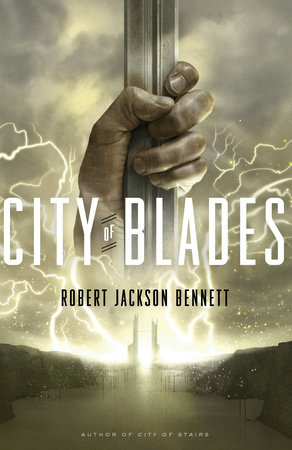A Feast Of Ice And Fire is the official companion cookbook to the series
Game of Thrones. Using medieval cookbooks such as:
The Forme Of Cury, The Compleat Cook, and
Ein Bych Von Guter Spise the recipes are given the feeling they are really entering the world of
Game of Thrones. There are guides on how to serve a proper feast, menus for each area represented in the cookbook, and an index if you know what kind of recipe you want to try.
I was first introduced to this cookbook by another book reviewer who said I would love this cookbook based on my love of fantasy, Medieval history, and cooking. I promised to try it, but had reservations based on other experiences with cookbooks based on a series. Usually the recipes are just loosely connected to the series, and consequently, to me are less interesting. As soon as I began reading the recipes in this book, I knew it was different. I was thrilled to discover recipes from Medieval cookbooks. It gave a very authentic feel to recipes that are from the
Game of Thrones world. I also liked that above each recipe was a quote from one of the books that specifically mentioned that type of food. The authors truly made an effort to come up with recipes that connect to the books which made me very happy.
The recipes are organized by region. The regions are: The Wall, The North, The South, King's Landing, Dorne, and Across the Narrow Sea. There are also pairing recommendations with each recipe so you can cook by region, or by the recommended pairings.
I was so excited about this cookbook, I decided to try a little bit of everything by having a Game of Thrones Feast. I carefully perused the cookbook to be able to try a little of everything offered while still having a feast that went well together. Here is what I made:
 Mulled Wine
Mulled Wine
From the section: The Wall. I used the Medieval Mulled Wine recipe. I used Lex Petits Carreaux Cabernet Sauvignon for the wine. The recipe recommended just carefully ladling out the wine and not disturbing the layer of spice and fruit. If I made this again I would finely strain the wine. Even with careful ladling, the wine was very thick with occasional chunks. It did have a good flavour.
Crusty White Bread
I had originally planned on making Black Bread from the South, but ended up making the Crusty White Bread from The Wall because I had all the ingredients on hand. I made it the day before the feast to spread out some of the preparation and cooking. It made a light moist bread. The method of cooking is easy and makes it so the crust does not dry out. Will definitely make again.
Salad At Castle Black
I had wanted to make Sansa Salad from the King's Landing section, but it called for flowers, and those are easier to get in the summer. I will try it in the future. This salad is from The Wall and is easy to make with a lot of flavour. I roasted the chickpeas, which was an incredible addition to the salad and was a favourite part of the feast. I had requests to make this again. It is an simple way to dress up your salads.
Honeyed Chicken
From The North, this recipe sounded incredible, and it lived up to my expectations. I might even try this on a turkey for Thanksgiving. It had good flavour, and made an excellent main dish. The chicken stayed moist and was not too sweet with the honey sauce. It went wonderfully with the other dishes that I made.
Baked Apples
Also from The North, I used the 17th century recipe for these. I used these for the dessert course. They made a quick and simple dessert that was not too sweet. It was really delicious spread over a slice of the White Crusty Bread.
Beet Soup, Salad at Castle Black, and Crusty White Bread
This was the first course, which was quite good. The Beet Soup comes from Across The Narrow Sea. It was rich in flavour. I would recommend using a blender to puree it as mashing it did not work well. I really enjoyed this combination as the start to the feast.
Honeyed Chicken, Turnips in Butter, and Buttered Carrots
This was the main course. I used the modern recipe for the Turnips. It is from The North. This also should have been put in the blender(which was one of the options in the book)but I have a small apartment kitchen, and ran out of space. The Buttered Carrots, are from the King's Landing section. I also used the modern recipe for this. It was quite easy to make and was delicious! I will make them again. The Chicken, as discussed before was delicious with the extra sauce poured over like a gravy.
While I was cooking my feast, I listened to the soundtracks of season one and two of
Game of Thrones. While eating the feast, we watched Season 2 Episode 6. I thought this episode showed an interesting view of food. It has Arya serving Tywin in Harrenhal, and her identity is nearly revealed as she serves food to Tywin and Littlefinger. Joffrey is attacked by his starving subjects, and the Spice king refuses to let Daenerys use his ships as it is a bad investment for him. It was perhaps a little heavy on the theme, but it was a lot of fun! I highly recommend having a Game of Thrones Feast of your own.
There were so many more recipes that I want to try from this book. I really enjoyed this cookbook, and have added it to my list to buy. I loved both the Medieval and Modern versions of the recipes. I recommend making the delicious recipes from this cookbook!












